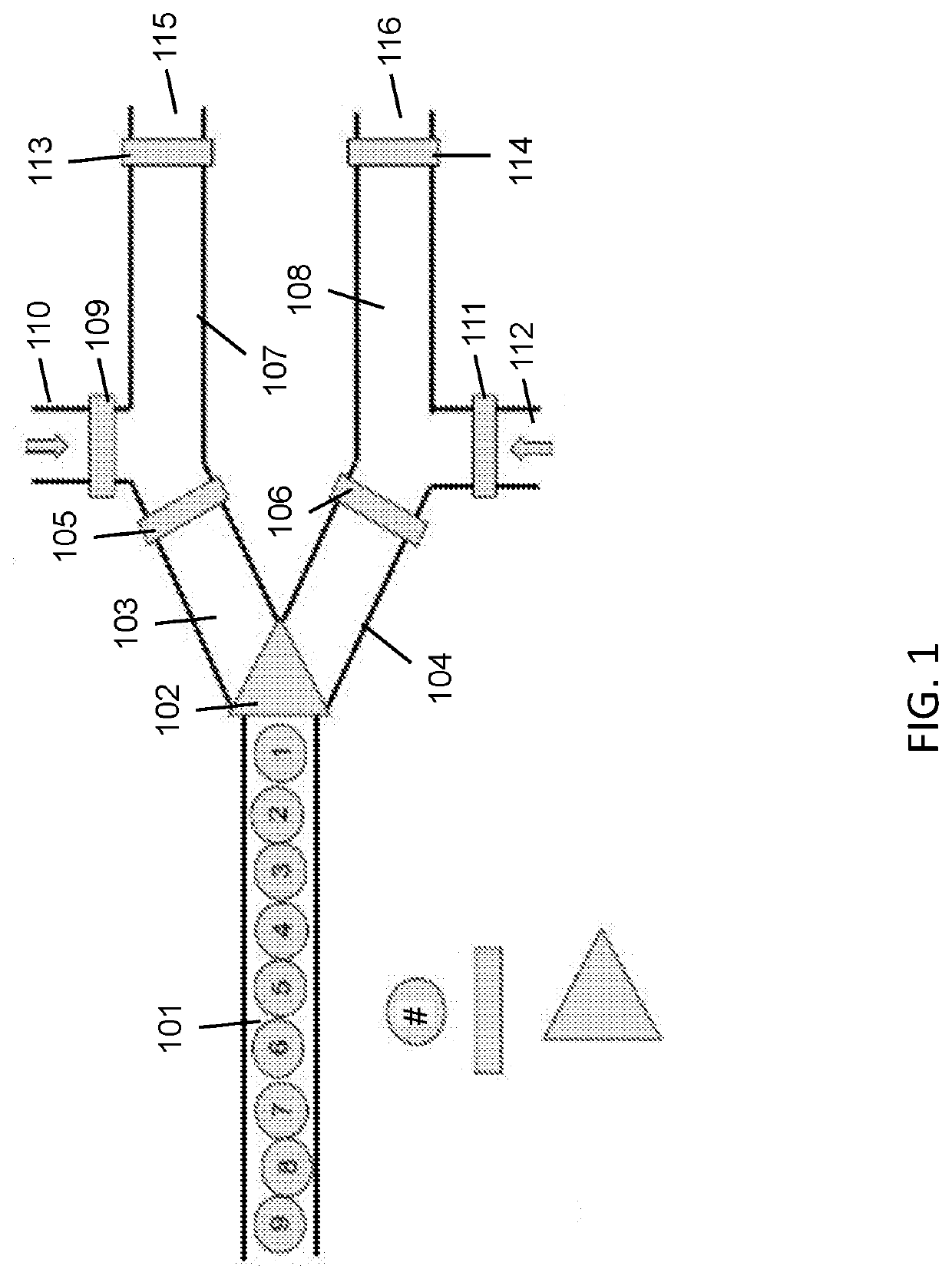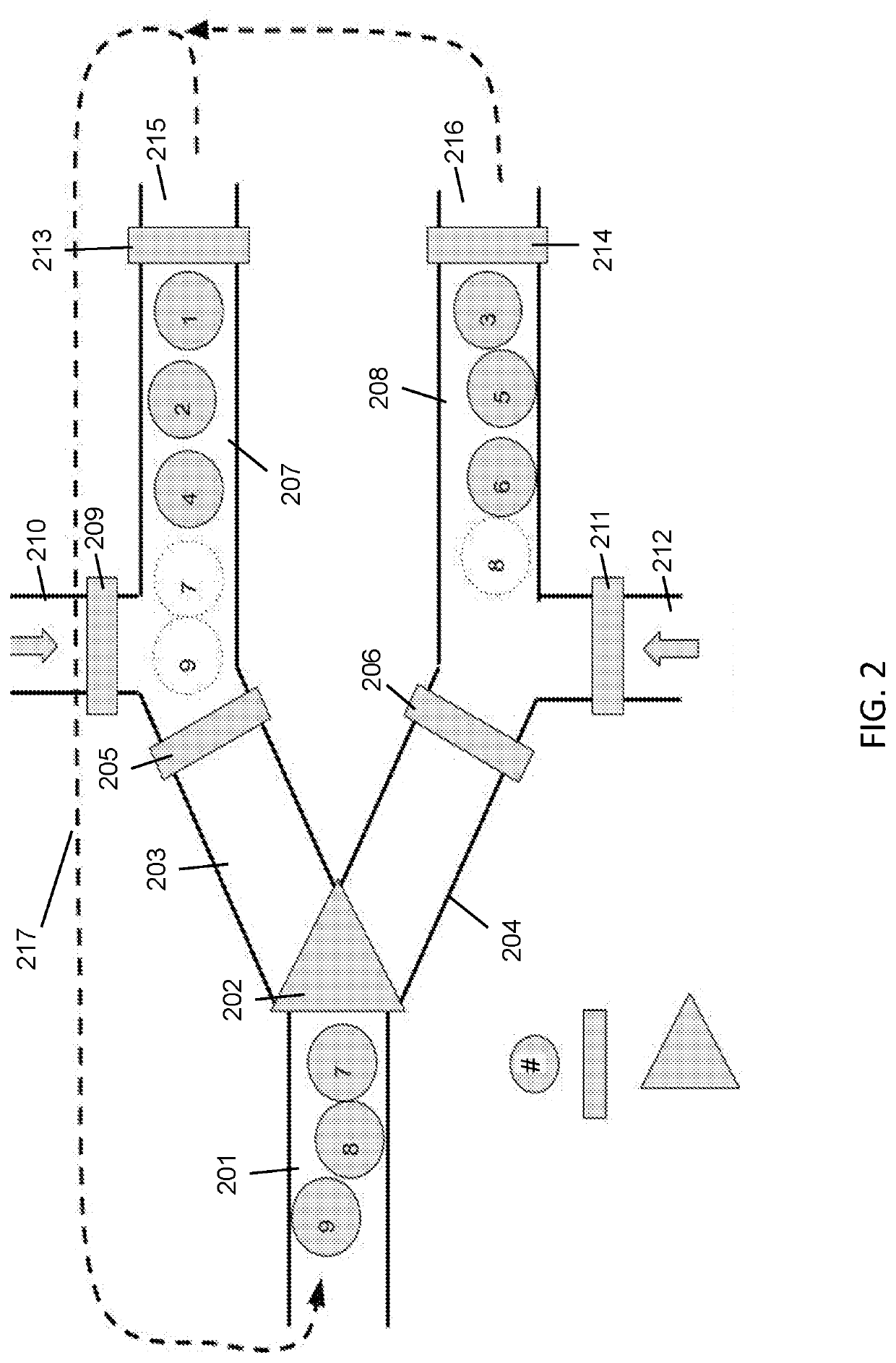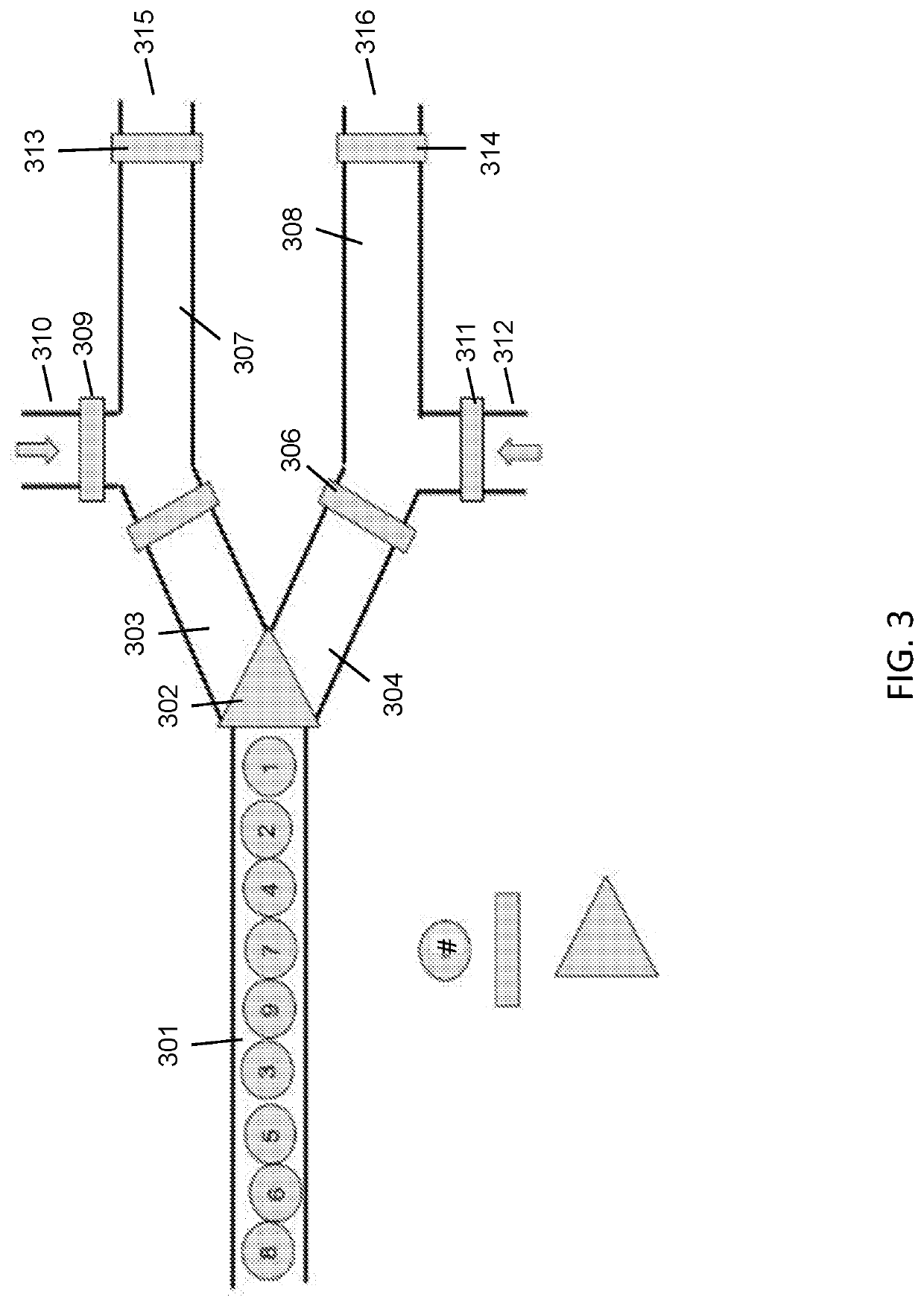Methods of using microfluidic positional encoding devices
a positional encoding and microfluidic technology, applied in bio laboratory glassware, chemistry apparatus and processes, etc., can solve the problems of time-consuming, costly, or laborious to discover the identity of the product, encoding, randomness, redundancy, etc., and achieve cost effectiveness, scalability, speed and accuracy. the effect of cost effectiveness
- Summary
- Abstract
- Description
- Claims
- Application Information
AI Technical Summary
Benefits of technology
Problems solved by technology
Method used
Image
Examples
example 1
l Encoding Device Architecture
[0450]We constructed a system configured to perform loading, holding, and manipulating of units as an example of positional encoding within a microfluidic device. The system comprises a fluidic network and a flow control system that controls the fluid flow through the network, as depicted in FIG. 14. The fluidic network is constructed from fused silica capillaries (363 um OD, 50 um ID, Molex), capillary tubing connectors (CapTight connectors, LabSmith), and custom fabricated connectors.
[0451]The bead-containing portion of the network begins with a feeder channel 1405 that serves as both a loading channel and a repository for beads prior to bead rearrangement. This channel was connected to a main channel 1410 through a custom-fabricated T-connector 1406 that serves as a bead spacer. Two branch channels 1412, 1420 were connected to the main channel via additional T-connectors that were configured to service as bead spacers. Beads may be distributed into a...
example 2
l Encoding Device—Bead Spacer
[0455]We first manually loaded a set of highly monodisperse 40 μm beads into the feeder channel 1405, capped the channel input with a bead stop 1404, and connected the other side of the bead stop to the channel's fluid control line 1403. Then, we directed flow in the main channel toward the top side of the main channel 1410, 1418, 1426 and applied pressure to the feeder channel via the reservoir 1416 and the main channel reservoir 1417.
[0456]Beads were fed through the feeder channel in a stacked regime. When abutting beads reached the T-connector, the cross-flow created separation between the beads as they entered the main channel 1410.
[0457]Snapshot images from a movie of beads being separated using a T-connector are shown in FIG. 23. We developed a bead spacer to address the challenges of manipulating beads within the stacked regime (i.e., risks of clogging and loss of positional encoding at changes in channel dimension, and difficulty sorting individu...
example 3
l Encoding Device—Bead Distributing
[0463]Beads within the main channel 1410 are flowed towards the branch channels 1412, 1420. We distribute beads into branch channels by adjusting the applied pressure on the main channel upstream and downstream of each branch point 1411, 1419 and by selectively activated flow within the branch channels 1412, 1420 via the two-way selector valve 1433 such that the carrier fluid distributed each bead into its preassigned branch channel. After a first bead enters its designated branch channel, the subsequent pressure configuration and branch channel activation is determined by the branch assignment of the next bead to be distributed. If this second bead is designated for the same branch channel, the applied pressures and the two-way selector valve setting is kept the same. On the other hand, if the second bead was designated for the other branch channel, we adjust the pressures on the main channel and the flow activation of branch channels in order to ...
PUM
| Property | Measurement | Unit |
|---|---|---|
| mean diameter | aaaaa | aaaaa |
| mean diameter | aaaaa | aaaaa |
| mean diameter | aaaaa | aaaaa |
Abstract
Description
Claims
Application Information
 Login to View More
Login to View More - R&D
- Intellectual Property
- Life Sciences
- Materials
- Tech Scout
- Unparalleled Data Quality
- Higher Quality Content
- 60% Fewer Hallucinations
Browse by: Latest US Patents, China's latest patents, Technical Efficacy Thesaurus, Application Domain, Technology Topic, Popular Technical Reports.
© 2025 PatSnap. All rights reserved.Legal|Privacy policy|Modern Slavery Act Transparency Statement|Sitemap|About US| Contact US: help@patsnap.com



